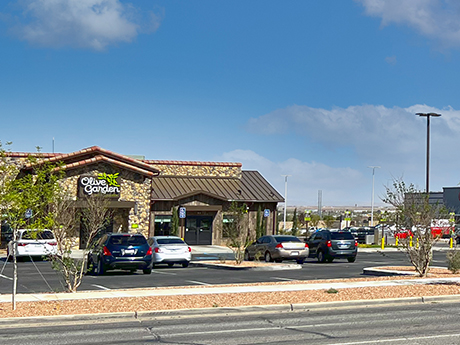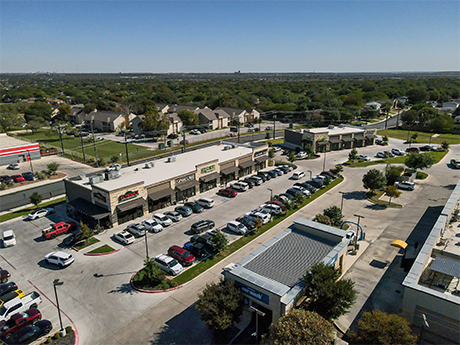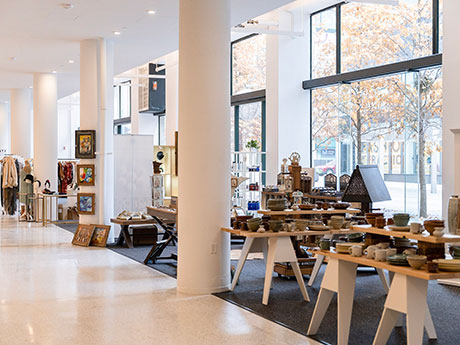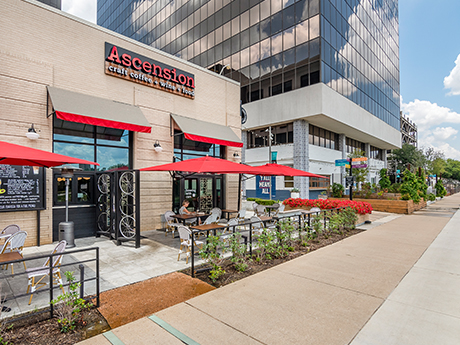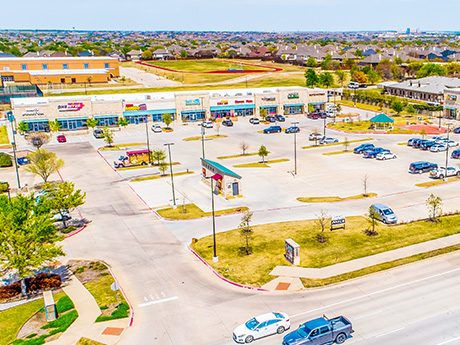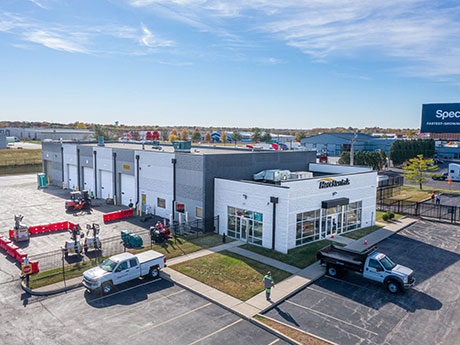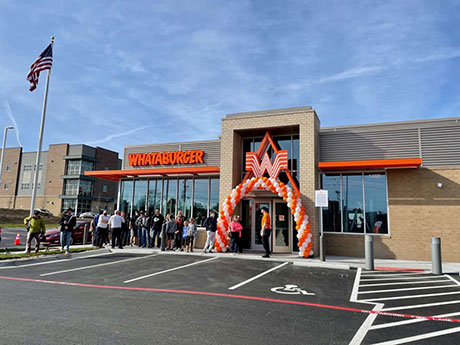Milwaukee is a city known for beer, motorcycles, basketball and blue-collar workers. However, Milwaukee should also be known for having a strong retail marketplace as well. With ever-changing markets and trends, retailers are finding many ways to get creative and adapt with the trends. Due to the adaptation, the competition for prime outlots is at an all-time high and does not appear to be changing any time soon. Outlot wars It’s with absolute certainly that the Milwaukee retail market has seen a massive influx for prime outlots. So much so that the phrase “outlot wars” is regularly used when describing retail outlot developments and redevelopments. In an already saturated segment of retail real estate, we have seen many new concepts/categories pushing to secure premium outlot sites in the market. Quick-service restaurants (QSRs) and fast-casual restaurants, auto and financial institutions are the biggest participants to date. Since the beginning of the COVID pandemic in 2020, we have seen a pretty significant shift in the food category from QSR and fast-casual concepts alike. Milwaukee has seen many existing concepts continue to expand or reposition within a market, but we have also seen new concepts making a push to enter the market as …
Retail
By Andy Moreno, director of operations, MIMCO; and McGee Sauls, senior vice president, MIMCO Historically, the El Paso market has often been overlooked, primarily due to its distance from other major Texas markets. However, that sentiment is shifting rapidly due to strong economic and population growth. While an accurate figure is difficult to pin down, the number of new entries and expanding franchises within the market has exploded in recent years. “As recently as 2015, national and regional operators were only beginning to recognize the sales potential of the El Paso market and just how underserved the growing population had become,” states Scott Walker, president of MIMCO. “Competition was limited, which led to advantages for existing operators. The landscape shifted dramatically due to the pandemic; since the second quarter of 2020, new retail categories have become active,” he continues. “Marketing quality sites generally leads to multiple offers from competing operators including car washes, lube shops, coffee shops and quick-service restaurants. We love to see this variety move into our market and drive competition for the next great location.” Market competition is advantageous and a key driver of innovation. Retailers use competition to discover and adopt the most efficient processes that …
By Steve Monroe, CCIM, San Antonio market manager, Oldham Goodwin The past year has seen steady improvement in the key performance metrics of the San Antonio retail market. Two years ago, participants in the retail sector, both local and national, were understandably preoccupied with questions about how the COVID-19 pandemic would impact retailers and owners of retail properties. The shift toward online shopping had begun several years earlier, and there was great fear that the pandemic would accelerate that trend such that it would prove fatal to retailers. The economic slowdown and quarantine restrictions that were implemented during the early part of the crisis appeared to validate those concerns. However, with the widespread availability and use of vaccines during the past 12 months, the San Antonio retail market, which initially saw significant layoffs and dramatic slowdowns, has come roaring back. The move toward online buying has indeed continued apace, and some consumers have shifted toward having goods delivered to them or utilizing curbside pickup models. In spite of these changes, nimble retailers have adapted to the changing landscape, and most are now thriving. In fact, for most retailers, the biggest operational problems have nothing to do with lack of …
The metro Minneapolis retail real estate market is healthy overall coming out of 2021, with suburban submarkets on fire in many cases and urban submarkets generally subdued. A major overhang of supply was absorbed across the region last year as construction slowed dramatically, pushing retail vacancies down, rents up and sales prices of single and multi-tenant assets higher overall. It’s a testament to the market’s overall stability and resilience given the multiple waves of COVID, and events surrounding the George Floyd case that was prosecuted last year in the city. Work-from-home effect With many white-collar professionals still working from home and the center-cities tougher on mask mandates and vaccine requirements, the suburbs have shone the brightest. Vacancies were as low as 6 percent in some areas, with the overall market at 8.2 percent at year-end, according to the Minnesota Commercial Association of Real Estate/Realtors (MNCAR). Among the strongest performing submarkets have been Apple Valley, Maple Grove, Coon Rapids and Woodbury. The metro’s eight regional malls are generally faring well, unlike in some other markets across the U.S. that are more over-supplied. That said, there’s some adaptive reuse going on, including in the northwest suburb of Maple Grove where a freestanding …
The “retail apocalypse” predicated on the pandemic never really materialized. Instead, we’ve seen retail do what it always does: evolve. Much as the rest of the country, metro Detroit’s retail real estate market has evolved and come back in a big way. Tenants on the move As vaccines were adopted and the economy allowed to reopen, the economic rubber band snapped back quickly and stronger than many of us could have predicted. Retailers were dusting off pre-pandemic expansion plans and back to signing leases in 2021. We saw new openings and new market searches from BJ’s Wholesale Club, Burlington, Carvana, Chick-fil-A, Chipotle, Starbucks, Crunch Fitness, Edge Fitness, Gabe’s, iFly, Jollibee, Meijer, Portillo’s, Ross, Shake Shack, Smoothie King, T.J. Maxx, Total Wine & More and Tropical Smoothie Café. 2021 also presented a big void in the Michigan furniture market following the bankruptcy of Art Van (which controlled 30 to 35 percent of the market). Numerous players including Gardner White Furniture, Ashley Furniture and Value City Furniture all quickly snapped up this real estate, immediately increasing their market share. Other categories that continue to seek space include car washes (which has to be one of the most active categories out there …
By Taylor Williams The factors that have long enticed Texas retailers and restaurants to locate in mixed-use environments are back in full force, such that these users are once again willing to pay a premium for spaces built-in density and walkability. In some ways, this trend never really disappeared in Texas, one of the first states to reopen during the early months of COVID-19. Through measures passed in 2020 like sanctioning to-go alcohol sales and allowing businesses to stay open, albeit at reduced capacities, Texas has worked to minimize retail and restaurant closures and prevent large volumes of these spaces from being returned to markets. Neither has the state’s job and population growth slowed during the 22-month global health crisis, allowing developers across all asset classes to push forward. In addition, the newfound desire from consumers and businesses to work, shop and dine outdoors as much as possible has kept trains rolling on mixed-use projects, which inherently connect different uses through external features like trails, open streets, pocket parks and plazas. From a design standpoint, those connective features remain critically important, says Barry Hand, principal in the Dallas office of global architecture firm Gensler. “Pocket or linear parks are viewed …
By Philip Levy, senior managing director, investments, Marcus & Millichap The Dallas retail climate is more favorable entering 2022 than it has been for most of the COVID-19 crisis. Overall, the marketwide retail vacancy rate fell 50 basis points during the first three quarters of 2021, ending at an even 6 percent in September. Nevertheless, that rate is about 100 basis points above the pre-pandemic level. A strong rebound in tenant demand is helping lower vacancy, however, with net absorption across the opening nine months of 2021 totaling more than 2.2 million square feet, compared with a net loss of 1.5 million square feet in 2020. Additionally, the construction pipeline has shrunk considerably, helping mitigate supply-side pressure as the market bounces back. As of the fourth quarter of 2021, less than 1 million square feet of new retail product with an expected completion date in 2022 was under construction in the greater Dallas area. This is a sharp contrast to the 2 million-plus square feet that developers delivered in each year between 2014 and 2020. Strengthening demand drivers amid a reduction in development suggest that downward pressure on vacancy will continue in the coming quarters. New Households Spend Near-term uncertainty …
This past year, many commercial real estate sectors and geographies that had been affected by the initial impact of pandemic-induced shutdowns demonstrated improvement. Across Missouri, we saw very robust levels of sales activity, as well as new construction and development — with more than $2.4 billion in overall commercial real estate sales volume through the end of third-quarter 2021. Although statewide growth was reported across all property types and sectors, industrial was especially strong, while retail emerged with slightly less consistency, but was positive nonetheless. The forecast for 2022 is bright, especially as retailers announce expansion plans and developers break ground on new projects. St. Louis is central to growth As an important secondary U.S. market, St. Louis and the surrounding areas are experiencing high levels of demand and activity. In the first three quarters of 2021, the St. Louis market reported $1.7 billion of overall commercial real estate sales volume, representing more than 70 percent of statewide activity. These statistics illustrate the sentiment of today’s active buyers who agree that St. Louis is a stable and attractive market for investment. Within the metro area, St. Charles County stands out as one of the fastest-growing counties in the country, reporting …
To the surprise of many in the Kansas City retail sector, the end of 2021 looked much different than most anticipated when 2021 began. As uncertainty buzzed through the retail world, the flurry of 2021’s real estate activity was a welcome surprise. Retailers who embraced technology and adapted to the changing circumstances of today’s world were able to reap the benefits 2021 offered. As consumers took advantage of post-lockdown freedoms, brick-and-mortar retailers experienced a surge in sales volume. Throughout 2021, many national retailers and local Kansas City owners reported volumes exceeding 2019 pre-COVID levels. It’s comforting to report that retail leasing and sales continue to be strong, and overall Kansas City remains consistent in attracting retail business during these uncertain times. One of the most recognizable transformations in retail is the way in which technology seamlessly connects e-commerce and brick-and-mortar stores. Consumers can now use technology to satisfy their desire for the contactless fulfillment of their order, browse local inventory at grocery and retail stores for immediate pickup and grocery shop without entering the store. This list will continue to grow as acceptance of the technology accelerates. Another noticeable retail alteration is the addition of drive-thrus as well as …
By Taylor Williams Demand for retail and restaurant space in Northern New Jersey has long been buoyed by spillover tenants that find themselves priced out of premium spaces in New York City. Yet despite the fact that retail rents throughout the city have been depressed for the last 18 months, users have not flocked to Manhattan and Brooklyn at the expense of the fringe markets of Northern New Jersey. In fact, brokers in the latter region see a healthy level of demand from a wide range of users that see opportunity in the current conditions. “The closures of national soft goods retailers that were squeezed by reduced demand and supply chain constraints during the height of COVID-19 left some beautifully built-out spaces,” notes Kevin Pelio, director of leasing at Azarian Group. “This has benefitted local and regional operators who can come into a prominent retail location without the capital-intensive, upfront investment typically required in a normal market.” Pelio adds that the larger trend among brick-and-mortar retailers to reduce initial capital outlays and build-out costs has also led to reductions in landlords’ tenant improvement (TI) allowances. Brian Katz, CEO of Englewood, N.J.-based Katz & Associates, concurs that certain retailers are aggressively …



